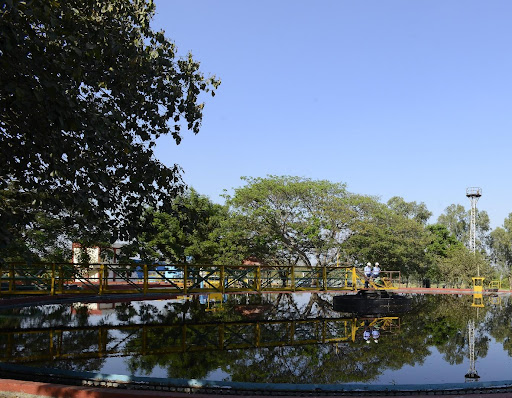Our Journey towards Reducing MMC Fibers’ Water Impact
February 07, 2023Water is a precious natural resource that is key to survival and also a shared resource required for various activities such as agriculture, sanitation and hygiene. It’s also an integral part of the apparel supply chain. Producing man-made cellulosic fibers (MMCF) like viscose and modal is a water intensive wet spinning process.
As part of our sustainability strategy, conserving natural resources is at the top of the agenda. Birla Cellulose is on a mission to halve its water consumption by 2025 compared to a 2015 baseline. As of 2022, the fiber manufacturing company has achieved a 45 percent reduction, and we are investing in both in-house innovation for maximizing recycling as well as state-of-the-art technologies for improving water use efficiency for further progress in the coming years. We believe that we are the lowest water consumer for viscose manufacturing processes globally.
Water conservation has been an effort over the 75 years since Birla Cellulose began and is being optimized with increased productivity of lines. Once our factory opened, migrant workers flocked to the area for job opportunities, and it became clear that water availability needed to be protected for the growing population and increased agricultural activities. This thought was nurtured over the years, and in 2015 more stringent targets were set to formalize and accelerate the efforts.
As responsible operators, we aim to achieve reduction beyond the set target of 50 percent. “In line with the commitment to SDGs 6 and 12, reducing water consumption is high in our agenda,” said Surya Valluri, Chief Sustainability Officer for Birla Cellulose. SDG 6 covers water availability and sustainable management, while 12 is centred on responsible consumption and production.
“As a culture, it has been propagated throughout the organization that water conservation is not reduction alone. It’s the larger cause towards society, towards meeting those goals,” said Mr. Valluri. “So, every single person in the operations is quite aware and aligned with the goal that we will be meeting the set SDGs.”
This company-wide mindset shift includes using water as a KPI across operations. And water conservation supports our guiding principle of the four Rs: reduce, reuse, recycle and regenerate.

Water recycling initiatives
Among our water conservation initiatives is water recycling. We have segregated water input and outflow streams. Depending on the quality of used water, some is fit to go directly back into processes, while some streams undergo preliminary physical treatments like filtration before recycling and others undergo reverse osmosis to remove dissolved salts before being recycled for production.
Another initiative we have undertaken is zero-liquid discharge (ZLD), in which between 92 to 95 percent of wastewater is recovered. Despite the benefits from a water management perspective, this comes with a sustainability side effect of high energy use. Mr. Valluri noted, “ZLD may not be the most optimal solution because of its energy dependency.” As an alternative, we are considering minimum-liquid discharge, in which a significant portion of water is recycled and then a small amount of water is discharged, meeting not only the regulatory norms but the benchmark EU BAT and ZDHC wastewater guidelines.
To propel our water conservation efforts, we are investing in research and development, which is working extensively for various sustainability solutions for the business, with water conservation being the key focus area. R&D teams at the business level support the site teams with their own innovative solutions but also work very closely with various innovators whose solutions are tailor made to unit-specific requirements.
We are also seeking out and adopting technologies that require less water, lowering consumption needs from the start. Additionally, we are also looking to leverage alternative water sources like sewage. Water harvesting—such as collecting water into reservoirs during monsoons—helps us conserve water and sustain operations during dry seasons.

As a part of our sustainability journey, we are also very focused on circularity. Our Liva Reviva fibers are created with 30 percent textile waste, giving them a lower water consumption profile. Currently, we are undergoing a life cycle assessment to quantify our water saving efforts as well as the entire impact of Liva Reviva fibers.
Aside from water reduction, our man-made cellulosic fibers support a healthier marine environment because they are biodegradable. Any microfibers released from MMCF textiles will break down, whereas synthetics cannot biodegrade and thus remain in bodies of water. “MMCF is a water-intensive fiber, but it has very good credentials in terms of sustainability,” said Mr. Valluri.
To know more about our sustainability initiatives, click here.









